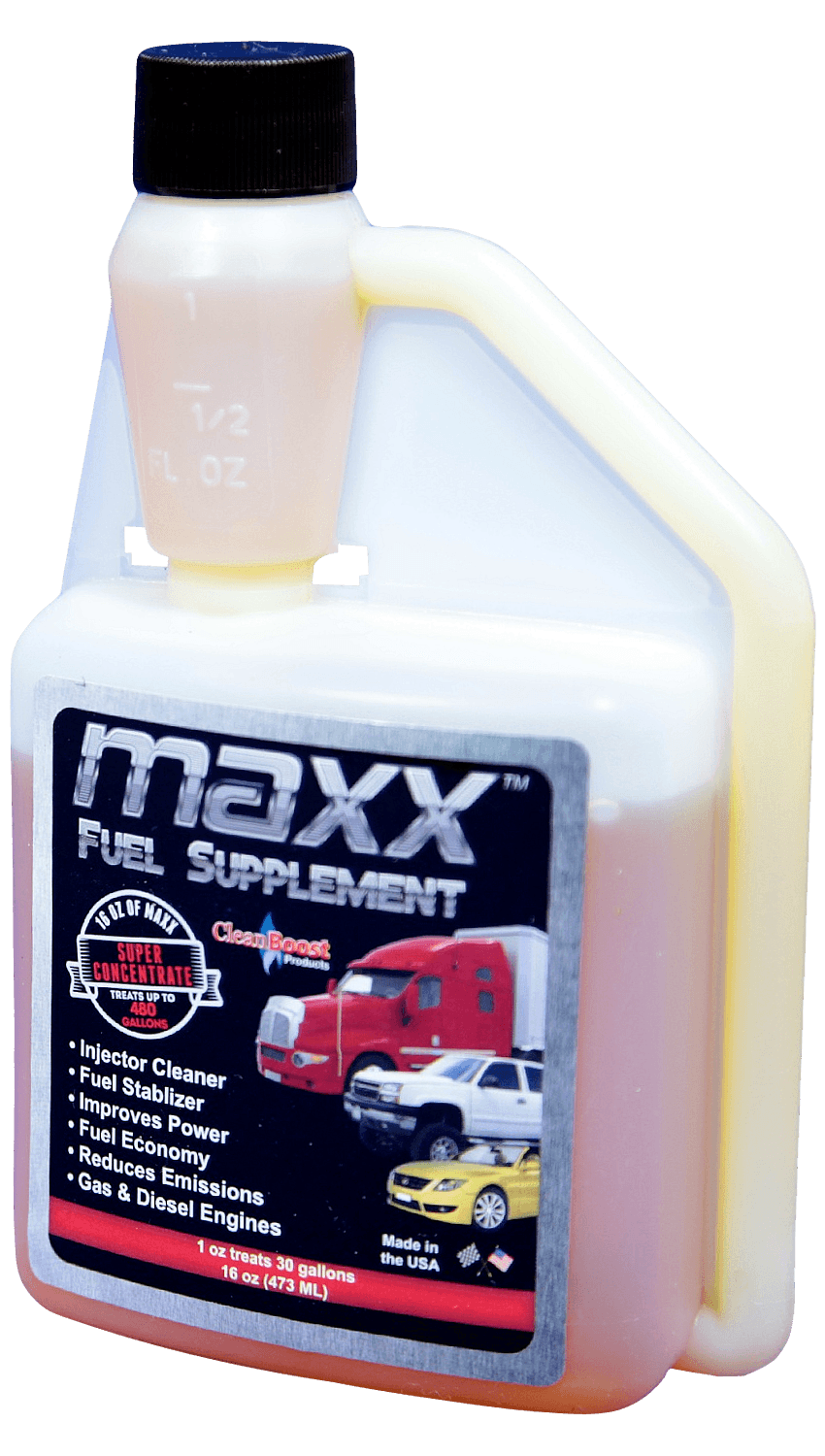How to Remove Engine Deposits?
Stoplight to stoplight acceleration can give you a sense of how well your engine is performing with a seat of the pants kind of feel. What happens when things begin to feel a little sluggish on throttle response? This article is all about how to remove engine deposits.
Maybe your engine is beginning to sound more like a tractor and less like a performance vehicle. Maybe this is making you less proud of your car or truck when chatting about it with friends. The worst part of all is when you go to the gas station to fill up and realize that you're not getting the same or usual miles per gallon either.
Combustion efficiency depends on a few factors, such as fuel quality, proper ignition timing, fuel injection components working properly, etc. However you might have a severe case of engine deposits and be totally unaware of this condition.
Let's explore a little deeper just what carbon deposits are. What are common causes, common issues and how to rid yourself of these menacing power and mileage robbers.
When you mix up heat, oxygen, petroleum and pressure you get an explosion. Each explosion generates power and also burned fuel that is eliminated through the exhaust. Multiply this process by a few thousand revolutions per minute under normal loads and you get only a whole lot of burned fuel out the exhaust...or do you?
As we uncovered in a resource article from Fuel Tank Maintenance, not a single element that comes into play in a working engine is 100% efficient. Starting with fuel quality and ending with the combustion chamber, we see places in which different variable and parameters affect the extraction process of power from a gas and air mixture and give birth to exhaust gas that contains unburnt fuel.
This unburnt fuel is in gas form and will be carried with the rest of the exhaust gases all the way to the tail pipe. In comparison with exhaust gases, unburnt fuel will leave behind a black-ish residue everywhere on its escape path... from exhaust valves to to tailpipes. Chemists and automotive engineers have closely followed this over the years. They have created a list of certain areas that engines are more prone to carbon deposit formations.
Depending of the areas where they form, these deposits can have different effects. Either on the operation or the performance of an engine, regardless of the fuel it uses. It's all about nasty hydrocarbons.
Deposits in the combustion chamber
are almost inevitable due to the fact that during operation fuel/air mixture is exposed to very high heat. It can take just a few hundred hours of operation to see deposits in the combustion chamber. Researcher's hypothesis says that these deposits are formed because of the precursor molecules . These molecules form from the interactions between fuel and air when the flame "quenches" at the cylinder walls. The molecules travel to the walls and undergo a reaction at the surface that leads to deposit formation.
Deposits on injectors
appear for mostly the same reasons. Sometimes small amounts of fuel remain in the injector tip after the engine is shutdown. Result is that fuel will be exposed to the residual heat of the injector. Basically the fuel will get "slow cooked", polymerizing and reacting with oxygen to finally form carbon deposits.
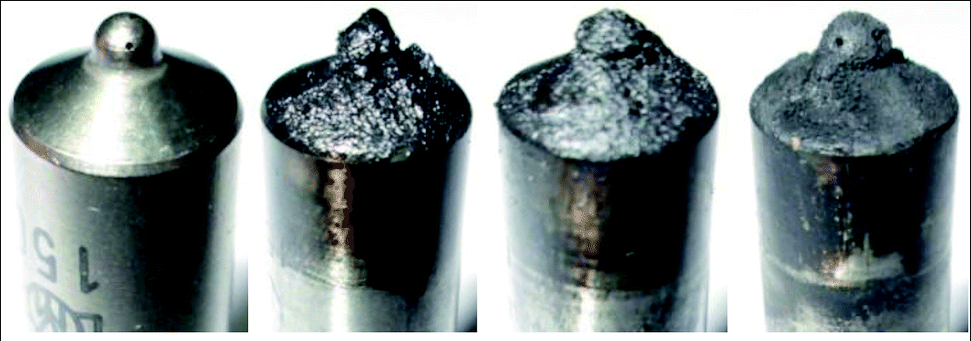
Carbon deposits on injector
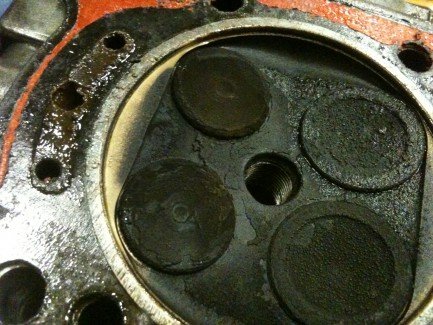
Carbon deposits in combustion chamber
How does this affect engines over time?
Engines are designed with these deposits in mind so they can withstand some level of deposits. However, left unchecked these deposits can really start to grow in size and mass.
Combustion chamber deposits can grow in size to the level where they start altering key factors of engine mechanics.
Factors such as NOx gas formation, altering combustion flame speed or even change the octane needs of an engine. This is the worst alteration that can happen to a burning chamber.
Due to the deposits forming on the piston crown there is a change to the inside volume of the chamber. This further changes the octane rating needed to keep the fuel igniting at the optimal time for the engine. This can produce other problems such as hot spots and knocking, or pinging which can appear once the burn pattern of the fuel is altered by the deposits in the chamber.
Injector deposits influence performance and overall engine performance in a negative way. If carbon deposits were to appear, the engine would lose 5-10% in overall performance, while reducing fuel mileage. An exhaust gas analyzer would also show an increase in particulate emissions.
Why?
Deposits on the tip of injectors can change the injector spray pattern or reduce the effective flow area or the amount of spray at maximum lift.
Combined and left untreated for longer periods, these two types of carbon deposits can lead to engine damage that in extreme cases would be easier to replace the engine. A crazy thought for something that can truly be kept in check.
Engine carbon cleaning is a non-harmful procedure that breaks off carbon deposits from your engine's internals and helps eliminate them. It sounds easy and in most cases it is. A typical car needs a 30 minute session to eliminate anywhere between 40% and 90% of carbon deposits. The percentage depends on the engine condition and how long these carbon deposits were left to wreak their havoc.
Treat your car to a an engine carbon cleaning if you desire to restore performance, reduce emissions, make the engine run smoother and quieter (as it did when it was new) or restore mpg. Other perks also include cleaning piston crowns, valves, turbo vanes and EGR valves.
Interesting to note is how the "cleaning" agents are produced and how this technology works. Why? Because all this magic happens with the help of water and... well, just water.
The aforementioned "cleaning" agent is produced by special equipment which uses water as a main raw material. Water undergoes an electrolysis procedure and produces hydrogen and oxygen. This is achieved by running a strong electric current that splits the water molecules (H2O) into highly charged particles of hydrogen and oxygen (better known as oxyhydrogen - HHO). The mixed gas is then introduced into the engine in a continuous feed for the whole duration of the session.
Engine carbon cleaning is safe
to use on gasoline, diesel and also hybrid engines. Efficient on motorcycles, cars, trucks, boats or heavy agricultural equipments. As long as it's an internal combustion engine, it can benefit from this.
How it works?
The electrolysis equipment is linked to the car's intake housing to feed fresh HHO directly into the plenum area. Here it reaches a running engine and will be mixed with air, fuel and carbon deposits. In it's journey through injectors, combustion chambers, pistons, valves and exhaust system, the hydrogen component reacts with the carbon and produces hydrocarbon gas.
Due to this chemical reaction, carbon deposits are lifted from the engine components. After lifting they will be transported by the pressure through the exhaust system, until it exits the vehicle.
End result?
A state of cleanliness similar to new, results obtained without the use of any harmful chemicals or harsh detergents.
Depending on the deposits level, an engine can require multiple 30 minute sessions until it is fully cleaned. Cleanliness can be verified with a simple bore-scope camera on a smartphone.

What can benefit from carbon cleaning?
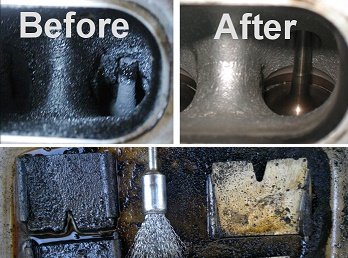
Before and after Carbon Cleaning
The engines that don't have any carbon deposits are the ones that are new and unused. Once an engine starts to function, fuel runs through the combustion chambers and as detonations take place, carbon deposits appear.
Mechanically, an engine is designed to undertake low carbon deposit levels and not be bothered by such a menacing material. Issues begin to appear when, due to different circumstances, these carbon deposits start to become excessive. In the past when direct-injection engines just hit the market, most of them started to develop drivability issues. Later it was discovered that the issues were due to excessive carbon buildup around the intake valves.
Unfortunately, this phenomenon still appears in both older and newer model engines with this type of fuel injection being more prone to having issues. There are three main reasons why direct-injection engines are more sensitive to carbon deposits. From these reasons, one is exclusively a direct-injection fault while the other two are also problems shared in the older port fuel injection types (but with less negative influence on the engine's performance).
Additional reasons are linked to fuel detergents. If you've ever seen an engine opened up, you've personally witnessed that the interior components have a clean, almost polished look to them. This is thanks to the fuel and detergents found inside it. When it travels inside the engine, it flushes every compartment it encounters.
However, what tends to happen in direct injection systems is that this fuel and it's detergents don't reach the back of the intake valves. Simply because fuel is injected straight into the cylinder instead of the back of the valve, leaving this and the fuel port prone for accelerated buildup of carbon deposits.
Another contributing factor is constantly evolving technology.
As engines become more and more efficient and able to squeeze more power from smaller displacements, things heat up even more on these small liter engines. This was achieved by fiddling with the air/gas mixture, timing and combustion pressure.
One caveat though is that these are the exact elements that make problems worse over time since the engine is so finely tuned that it functions somewhere at the edge between the most efficiency and a misfire. Room for error is in the size of microns and developing hot spots in the combustion chamber or having a worn out spark plug just in the equation.
If a hot spot appears or sub-optimal spark is delivered, the unburned fuel amount in the combustion chamber goes up. During the intake stroke when the valves open, they could come in contact with this unburned fuel that would stick to them. Because the intake phase is cooler vs. the exhaust phase, these deposits on the intake valves cannot be burned off.
The overall design of the combustion chamber on both direct injected or fuel port engines is made in such a way that the intake valve extends into the chamber. Same as above, if the combustion cycle is less than optimal the intake valve is exposed to byproducts that can stick to its neck.
Finally, current technologies such as variable valve timing, turbocharging, cylinder deactivation and positive crankcase ventilation systems, all play into increasing the possibilities of carbon engine deposits.
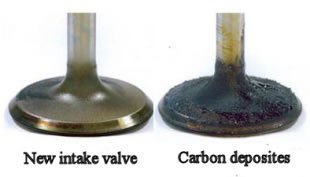

Cylinder with carbon deposits vs Clean cylinder
Luckily there are a few solutions to solve carbon deposit issues.
One of them is called preventive maintenance. It can be a painful for every one of us to remember to take care of certain maintenance items in hopes that the future will be problem-free, however these few actions mean almost nothing in comparison with the benefits they bring.
The small list goes like this:
- Schedule and respect oil changes to keep the camshaft actuators in optimal working condition. This will ensure that the intake valves have a normal exposure to these engine deposits. And here you thought oil changes were all about reducing wear only.
- Replace the spark plugs at recommended intervals to reduce the risk of having unburnt fuel in the combustion chamber.
- Ensure the fuel injectors are clean to help them maintain the correct spray geometry in order to avoid hot spot creation.
- Regularly check for engine management software updates. This can help reduce the exposure of the valves to conditions favorable for carbon buildup to occur. You may need to search for this even on the OEM's website to ensure your vehicle has the latest version of the software as most of the official updates fail to mention such problems.
Now that you've done all of the above, you're almost there. Unfortunately there is still room for worst case scenarios where regardless of all the actions undertaken by you, your engine still develops a hefty deposit of carbon naturally. This is the moment when you will need to look into chemical cleaners. These chemical cleaners are injected into the car's intake system and eliminate carbon deposits, however some can harmful to your engine and its components.
Another way to go about it in a more invasive way is to take the care to a shop, have the intake manifold, heads, etc removed and have brushes or a sand blaster applied on the deposits to remove them. This however can be costly and very time consuming.
To be on the safe side
the dedicated and easiest solution is to use quality additives and fuel treatments to control carbon deposits and prevent the need to use invasive or chemical solutions to fix your engine.
A great cost effective example would be CleanBoost® Maxx™ which is formulated to eliminate carbon deposits and remove all the harmful elements that can lead to its appearance.
Quality describes this additive as it contains a unique formula and a proprietary combustion catalyst that besides keeping carbon deposits under control, also improves your engine's MPG and power.
Read more about CleanBoost® Maxx™ and discover how a small investment of a few cents per gallon, which actually saves you money with improved performance, gas mileage and carbon deposit elimination, will end up being profitable when you factor in the overall longevity of your investment.
The sooner your follow these tips and take care of your engine. The sooner you can get back the good old days of having fun from stoplight to stoplight . Or just getting a kick out of your engine when you mash the throttle. Say goodbye to problems and headaches and embrace quality time with your fuel powered friend.
About the Author
Tech Guy
Automotive enthusiast, passionate about Jeeps, hot-rods, turbos, performance, efficiency, diesels, fuels, high performance oils, additives and anything with an engine.

